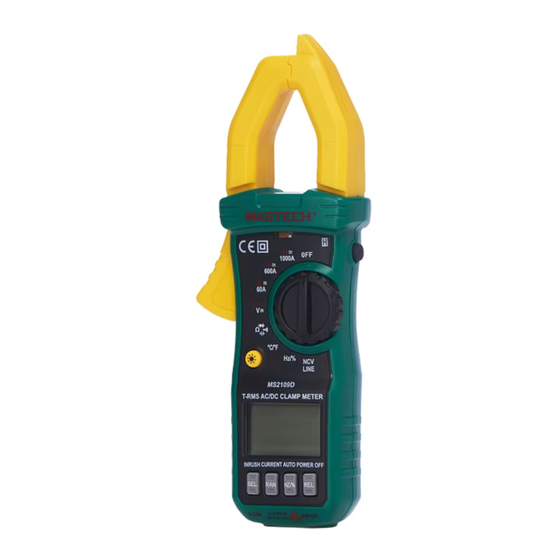
Advertisement
Quick Links
This series of digital clamp meters has been designed and
manufactured in accordance with international electrotechnical safety
standard IEC-61010-2-032, which specifies safety requirements for
electronic measuring instruments and handheld current clamp meters.
The series complies with the IEC-61010-2-032 standard for 600V
CAT III and the Pollution Degree 2 Standard.
Before using this instrument, please read this user manual
thoroughly and pay attention to the relevant safety guidelines.
Introduction
Table of Contents
1.SAFETY INFORMATION .............................................. 1
2.INSTRUMENT PANEL DESCRIPTION ....................... 3
3. PANEL FEATURE DESCRIPTIONS ............................... 4
4. FUNCTION BUTTON DESCRIPTIONS ......................... 6
5. TECHNICAL SPECIFICATIONS ..................................... 8
6. OPERATING INSTRUCTIONS ..................................... 14
7. MAINTENANCE ............................................................ 19
Advertisement

















Need help?
Do you have a question about the MS2109 Series and is the answer not in the manual?
Questions and answers